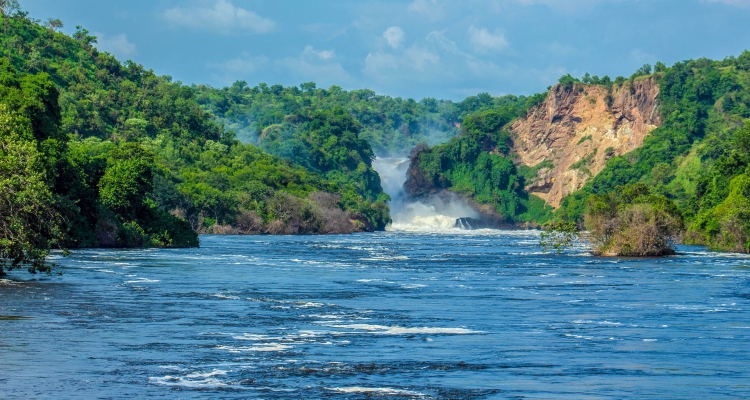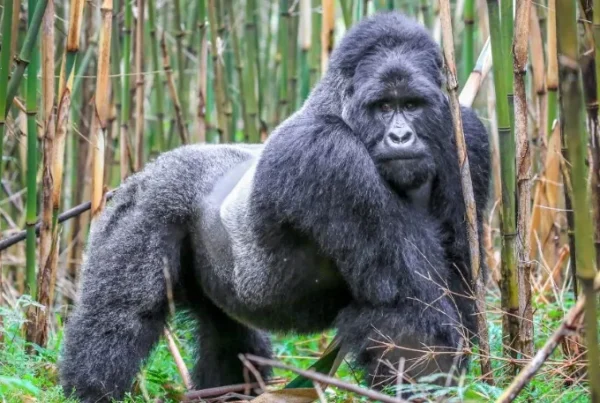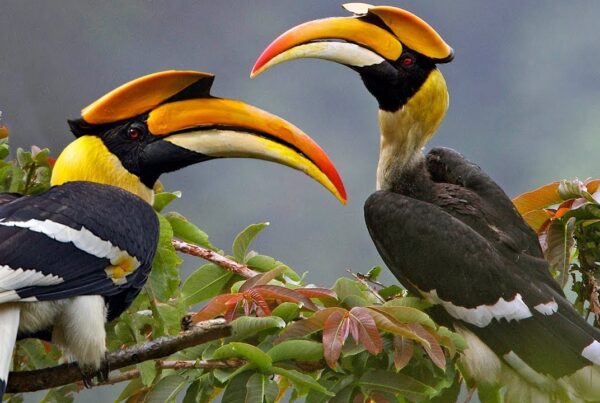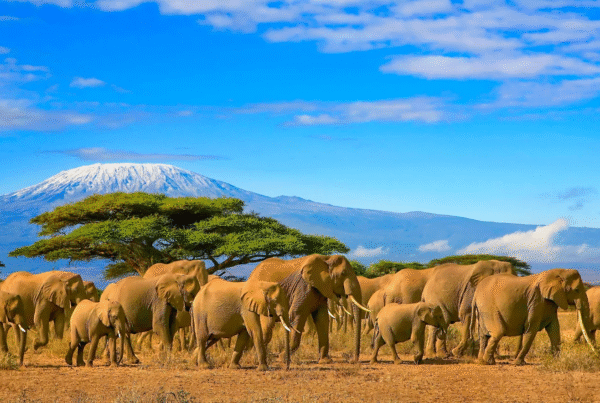Visiting Uganda in February
A Month of Warm Skies, Wild Encounters, and Cultural Awakening
As winter chills grip much of the northern hemisphere, the heart of East Africa pulses with warmth, color, and vibrancy. Uganda in February stands as a luminous escape, offering travelers the promise of untamed wilderness, cultural depth, and natural beauty at its most generous. This is not just another month on the calendar—it is a window into a land that breathes with ancient rhythms and modern hope.
February is often regarded as one of the most rewarding times to explore Uganda, when the climate aligns perfectly with outdoor adventure, wildlife activity is at its peak, and cultural life flourishes under clear, golden skies. From the densely forested slopes of Bwindi to the shimmering savannahs of Murchison Falls, the country reveals its soul in full color.
But Uganda in February is more than a collection of scenic landscapes—it is a feeling. A sense of harmony between earth and sky, a pulse of celebration within communities, and an invitation to those who wish to see Africa not through screens or postcards, but with their own eyes and spirit.
February’s Climate: Dry, Clear, and Perfect for Exploration
February falls within Uganda’s short dry season, a climatic sweet spot that brings consistently warm temperatures, minimal rainfall, and blue, cloudless skies across most regions. With average daytime temperatures ranging between 25°C and 30°C (77°F to 86°F), and lower humidity levels than during the wetter months, this is a time when travel conditions are at their best.
The absence of heavy rains makes roads more accessible, trails safer for hiking, and river crossings easier to navigate. Safari vehicles can reach remote wildlife areas without obstruction, and trekking through forests becomes more enjoyable under dry, shaded canopies. The highlands around Kabale and Fort Portal offer particularly refreshing weather in February, with crisp morning air and cool, starry nights.
In the northern and eastern parts of the country, where temperatures can soar, the dry spell causes animals to congregate near rivers and watering holes, making game viewing highly productive. The Victoria Basin, which includes Kampala, Entebbe, and Jinja, remains temperate and breezy, especially near the lake shores.
Wildlife Encounters: February in the Wild
February is one of the most strategic months for wildlife safaris in Uganda. As water sources diminish slightly and vegetation thins, animals become more visible and easier to locate. In Queen Elizabeth National Park, herds of elephants and buffalo roam freely near the Kazinga Channel, where boat safaris allow for close, unobstructed encounters with hippos, crocodiles, and an astonishing variety of birdlife.
In Murchison Falls National Park, the landscape transforms into a living diorama of nature, with giraffes grazing beneath acacia trees and lions basking in the sun-drenched grasslands. This is also one of the best times for spotting elusive predators like leopards, which are more active and visible in the open savannah.
Perhaps the most iconic wildlife experience of all is gorilla trekking in Bwindi Impenetrable Forest, which reaches a near-optimal window in February. Dry trails reduce the physical challenge of the trek, while the gorillas themselves tend to remain in lower altitudes during this time, increasing the likelihood of shorter and more successful encounters. The chance to spend a quiet hour observing these majestic primates in their natural habitat becomes not just a highlight, but a memory etched for life.
Chimpanzee trekking in Kibale Forest National Park also thrives during February. Troops are easier to track in the dry forest, and their playful interactions can be observed with greater clarity as the trees shed some of their foliage. Birdwatchers, too, find February especially rewarding, as migratory species pass through and endemic birds flourish in the forests and wetlands.
Cultural Richness and Community Life
While the wildlife may draw attention, the cultural richness of Uganda in February should not be overlooked. This is a time of transition for many communities, as schools resume full operation, agricultural cycles are reviewed, and traditional events are planned. In both urban and rural areas, visitors find themselves drawn into the rhythm of local life.
Traditional music and dance performances become more frequent during the dry season, particularly in cultural centers such as Kampala, Jinja, and Fort Portal. These events often showcase the diverse ethnic heritage of Uganda’s more than 50 tribes, each with its own language, customs, and art forms. February offers a unique chance to witness these expressions firsthand, whether at a formal performance or during an impromptu village celebration.
Markets during this period are especially vibrant, filled with fresh produce, crafts, spices, and handmade textiles. Conversations flow easily as vendors share not only their goods but their stories. For travelers interested in authentic interaction, this is a month when barriers tend to fall, and meaningful exchanges occur naturally.
In regions like Karamoja, the semi-nomadic lifestyle of the Karamojong people can be observed with respect and guided interpretation. Their relationship with the land, their livestock, and their ancestral practices offers an enriching counterpoint to the modern world.
Lakeside and Adventure Escapes
February’s dry and sunny weather also favors travelers seeking relaxation and outdoor adventure in Uganda’s aquatic landscapes. In Jinja, often referred to as the adventure capital of East Africa, February is a prime time for white-water rafting, kayaking, and tubing along the Nile. The water levels are favorable, safety conditions optimal, and the atmosphere energetic with local and international adrenaline seekers.
Lake Bunyonyi, near Kabale, remains a tranquil haven throughout the month, with its emerald islets, misty hills, and canoeing routes offering serenity and reflection. The calm waters of Lake Victoria are equally inviting, with opportunities for fishing, birdwatching, and island excursions under the sun.
For those drawn to the mountains, the Rwenzori Range and Mount Elgon are accessible for trekking and photography. The drier conditions make these highland routes more navigable, and the panoramic views from their slopes, especially at sunrise, are among the most dramatic in East Africa.
Festivals, Observances, and Events
Although February is not as event-filled as some later months, it still holds important cultural and spiritual observances. The Christian season of Lent sometimes begins in February, influencing the mood and practices of many communities. Church services become more contemplative, and pilgrimages are organized across denominations.
In Kampala and Entebbe, February marks the resumption of theatre productions, literary readings, and art exhibitions following the holiday lull. Venues such as the Uganda National Cultural Centre and the Afriart Gallery begin unveiling new programming for the year. For travelers interested in the creative scene, February provides an ideal opportunity to engage with Uganda’s growing arts movement.
Practical Travel Considerations
As one of the peak travel months, February demands a degree of preparation and foresight. Permits for gorilla trekking and popular lodges can sell out weeks in advance, and flights to safari destinations often operate on full schedules. Early booking is strongly encouraged, particularly for experiences that are regulated by conservation authorities.
Medical preparations should include the standard requirements for Uganda, such as a yellow fever certificate and malaria prophylaxis. The dry season reduces mosquito activity but does not eliminate it entirely. Travelers are advised to carry sunscreen, lightweight clothing, reusable water bottles, and walking shoes for outdoor activities.
Road travel remains efficient throughout the country, with major highways in good condition and domestic flights running reliably. Internet connectivity is stable in most urban areas and tourism zones, and mobile networks offer widespread coverage.
The Spirit of February: A Time of Freedom and Discovery
There is a quiet confidence that defines Uganda in February—a sense that nature, culture, and community are in alignment. It is a month that does not demand grandeur but offers it effortlessly. The sun rises earlier, the wildlife ventures farther, the people smile longer. Everything feels open and possible.
For the traveler, this is not simply an invitation to observe, but to participate. To stand at the edge of a crater lake and watch the sun dip below the hills. To share a dance in a village under the moonlight. To look into the intelligent eyes of a gorilla and feel humbled. February is when Uganda welcomes you not as a visitor, but as a witness to its truth.
Travel Uganda with Confidence — Choose WildHorn Africa
To experience the full depth of Uganda in February, it is essential to travel with those who know the land, honor its people, and protect its treasures. WildHorn Africa, a trusted leader in East African travel, offers curated journeys that unlock the essence of the Pearl of Africa.
With expert guides, customized itineraries, and a deep commitment to sustainability and cultural respect, WildHorn Africa ensures that every moment of your trip is safe, meaningful, and unforgettable. Whether your journey leads to the shadowed forests of Bwindi, the plains of Kidepo, or the banks of the Nile, WildHorn Africa is there to guide every step.
Let February be the month you meet Uganda. Book your African adventure with WildHorn Africa today—and walk into a world that will never leave your heart.





 WildHorn Africa – Authentic and unforgettable tours across Africa, guided by local experts who know the land, wildlife, and culture best.
WildHorn Africa – Authentic and unforgettable tours across Africa, guided by local experts who know the land, wildlife, and culture best.


